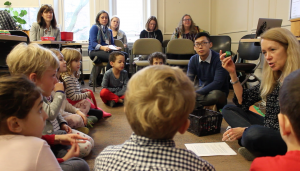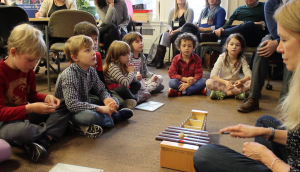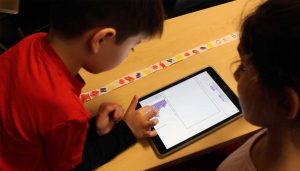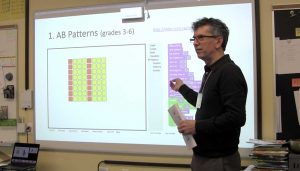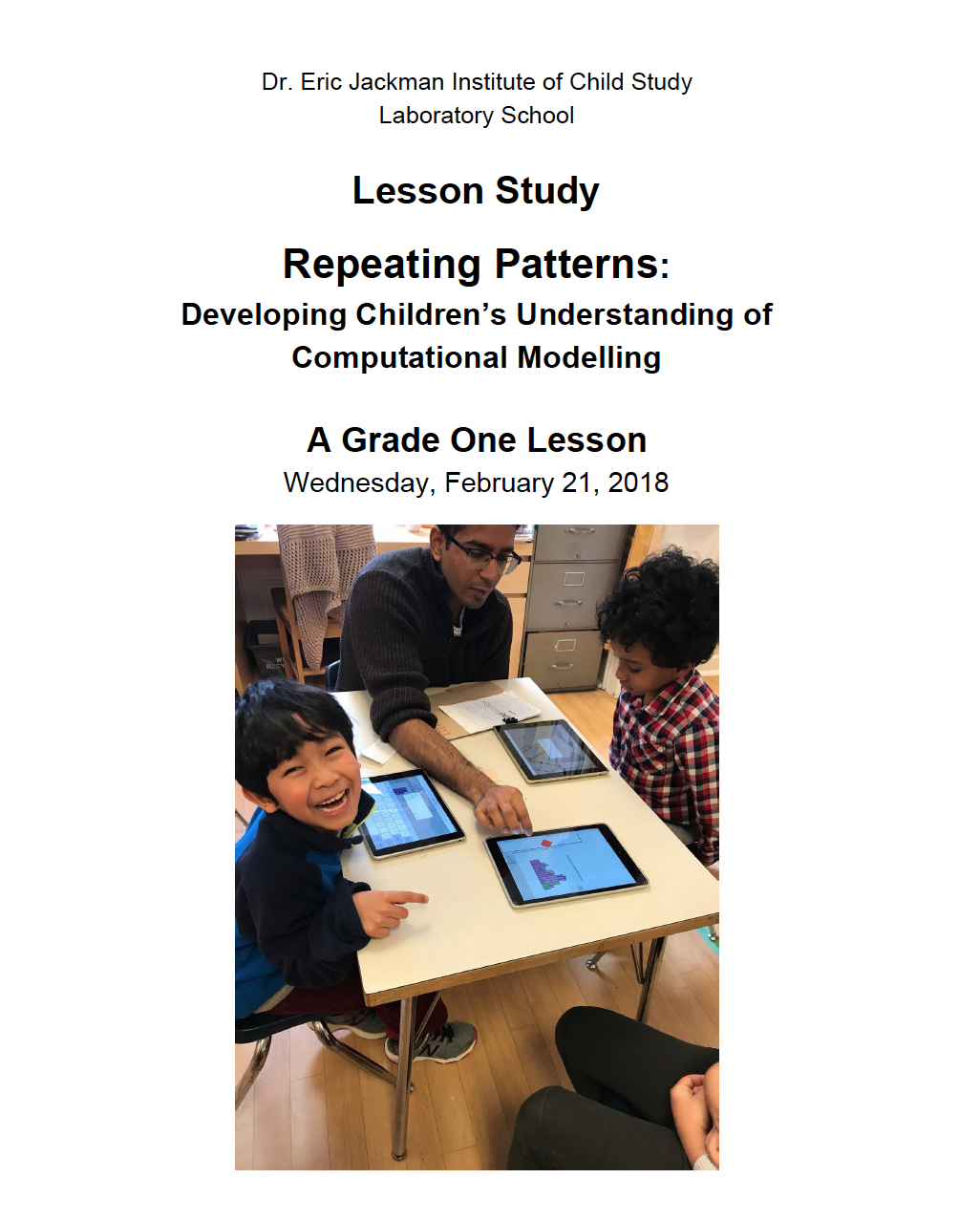On February 21, the Dr. Eric Jackman Institute of Child Study (OISE/University of Toronto) hosted a public demonstration lesson for approximately 50 educators. Teachers at JICS have for many years participated in lesson study as a professional development approach to strengthen mathematics teaching and learning.
This year, the Robertson Program was invited to take part in the lesson study PD, which focused on developing children’s understanding of repeating patterns and computational thinking with non-digital and digital coding experiences. We appreciate the leadership of Dr. George Gadanidis of the Math Knowledge Network and the coding and computational thinking work field-tested at St. Andrews P.S. (TDSB) throughout the grades.
- JICS Teachers Zoe and Nick introduce students to the coding lesson
- JICS Grade 1 teacher Zoe demonstrating how to play the pattern on an xylophone
- Students input their code using the Research Ideas software
- Professor George Gadanidis leads a discussion after the public lesson
In the weeks leading up to the public lesson, the JICS team familiarized themselves with coding software, looked closely at core ideas in repeating patterns (an important foundation for overall mathematical thinking), and designed the public lesson (which was adapted from initial lessons at St Andrews’ Public School). The teachers created curriculum connections and field-tested exploratory lessons with children in order to anticipate student responses to each aspect of the lesson.
| Click on the image above to download an overview of the lesson study. |
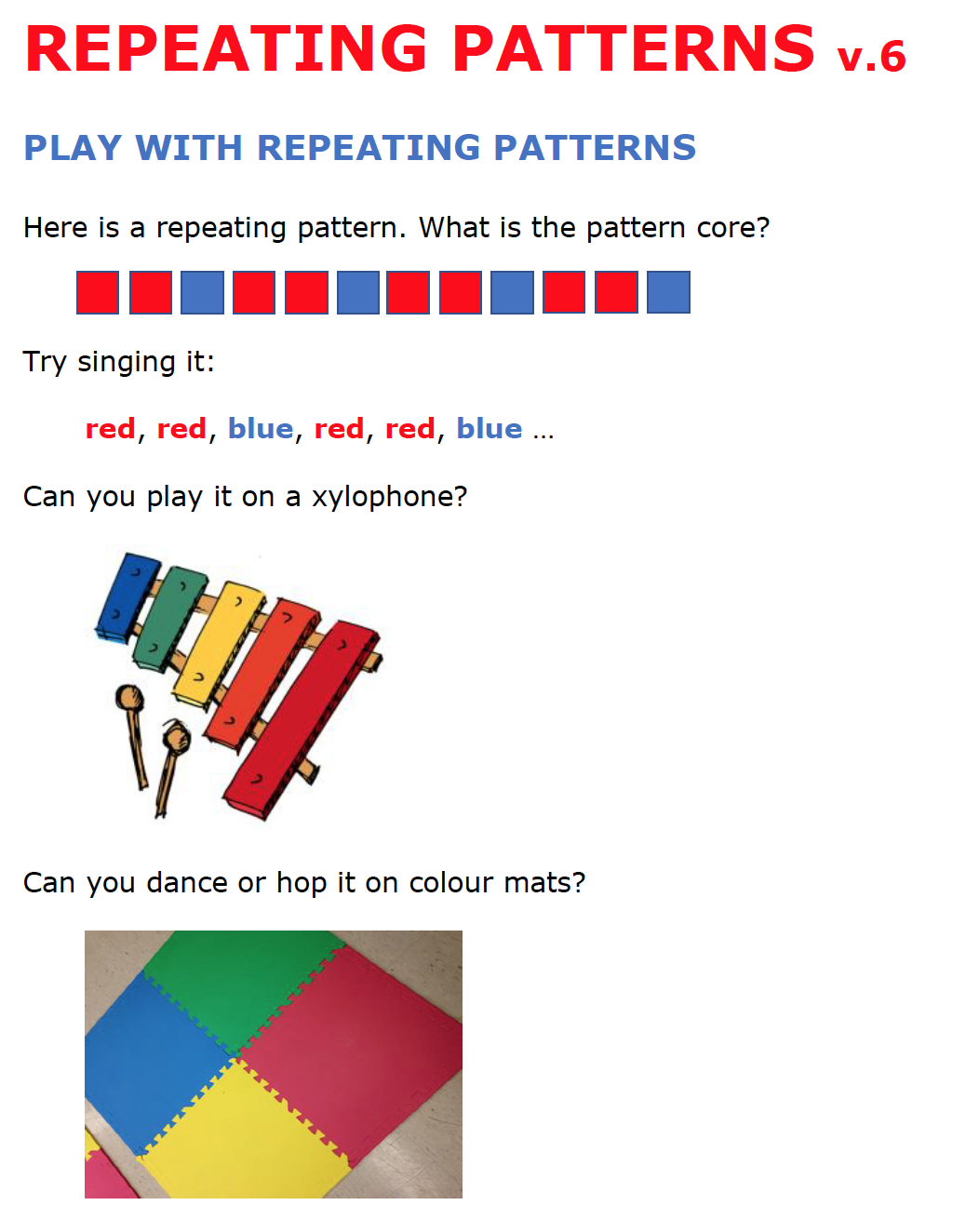 |
| Click on the image above to download a tutorial of the lesson used in our lesson study. |
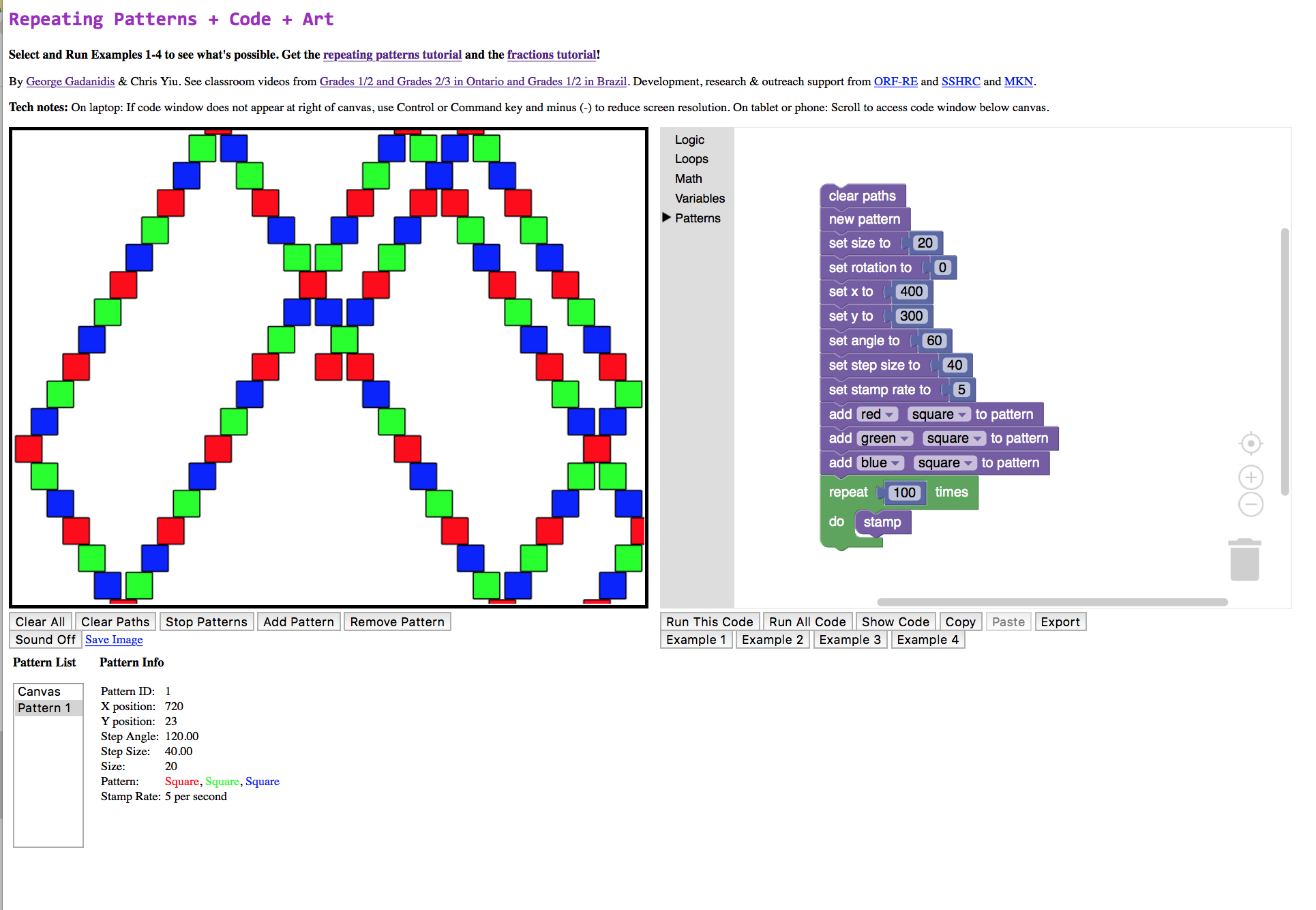 |
| Click on the image above to explore the software used in our lesson study – you will be redirected to the Research Ideas website. |
Goals
Here are some of the goals we set out for this day of learning:
- Have students comfortably use and understand coding language (such as rate, step size, loop) embedded in the repeating patterns program
- Have students recognize how numbers affect graphical representations of their repeating patterns
- Have students experience direct feedback from by altering code and subsequently revising their inputs based on this feedback
- Reinforce the idea of repeating patterns so the pattern core can be abstracted and then predict how the pattern core is extended
- Have students move into the role of creator, rather than user, of technology
- Have students appreciate the aesthetic possibilities of patterns – both visual and auditory
As part of the lesson study process, visiting educators were invited to act in the role of observers of the public lesson. A sample of questions for observers included the following:
- Are the children aware of how the pattern core repeats?
- Do the students show understanding of how the variables within the coding program work?
- Are they showing understanding of a sequence of steps?
- Do they understand that each piece of code does something different?
Observations
In a conversation following the public lesson, educators were invited to share ways in which they thought the coding environment provided meaningful math education opportunities.
Here are some of their thoughts:
I noticed something about how the technology allowed for the abstraction piece – It seemed as though doing the coding helped the children abstract the pattern core. They had to figure out what was repeating.
– Visiting mathematics education professor
I was really happy with the way this allowed the students to work in a really deep way with a pattern they created. I think I sometimes find in Grade One that colour patterns aren’t enough. They do a lot of that in Kindergarten and I’m not going to spend a lot of time just on colour patterns. But this, for me, is really, really great for Grade One because there’s so far you can go with it, and there’s so much possibility for developing students’ numeracy skills. It’s not just looking at that repeating colour pattern. I was really thrilled with this lesson study
– Zoe, Grade 1 Teacher, JICS
This has been a question of mine for some time now: How do I integrate computational thinking in the early years? With the later years, we work with Scratch and Apps and things like that, which has kind of a clear path as to how it can be integrated into the classroom. So, discovering this program and connecting it with the math curriculum in this way has been eye opening for me in how we can get kids in the early years and Grade One working with computational thinking software.
I think a lot of the learning comes through having discussions with the kids. You know, talking about how code works in general. We’ve talked about words like sequencing or a loop – they’re getting sort of that language exposure for later on when they’re working with other programs. I saw that conversation coming through the kids. For example, “oh, when we change this number, this happens.” So, for them to just make that connection that they have an effect on the program itself, I thought was really interesting.
– Nick, Special Education and Technology Teacher, JICS
As a junior grade teacher, I very often think of digital citizenship. I think this kind of background and building these CT skills early empowers the children to not just being participants on that digital stage but to be part of the creation of and influence on the digital stage. This lesson seemed like an early springboard for teaching children how to use technology to solve problems, so that by Grade 5 they can look at the world around them and reach out into the world and think about how they can use these skills to become compassionate, active citizens. I love that. I am always thinking of using technology, coding and Ct to prepare children for active citizenship – so they will have the skills and the heart to make positive changes in the world.
– Tanya, Grade 5 teacher, JICS
Even when we have these powerful tools and lots of opportunities for students to explore, focused thoughtful teacher action is really important for students’ understanding. As soon as the children were allowed to change the variables, they just sort of started changing multiple things at once. That’s when Nick [JICS teacher] stepped in and asked questions like, “What do you think will happen if this you change this variable?” Nick was encouraging children to change one thing at a time to see what would happen. For example, asking the class what might happen if he changed the stamp rate from 2 to 50. That was so crucial for students in terms of understanding.
– Ben, Grade 6 Teacher, JICS
We are grateful to have the opportunity to work with such dedicated teachers and dynamic students, to test out ideas in multiple contexts and to collaboratively design and revise lessons for, with and by educators.

